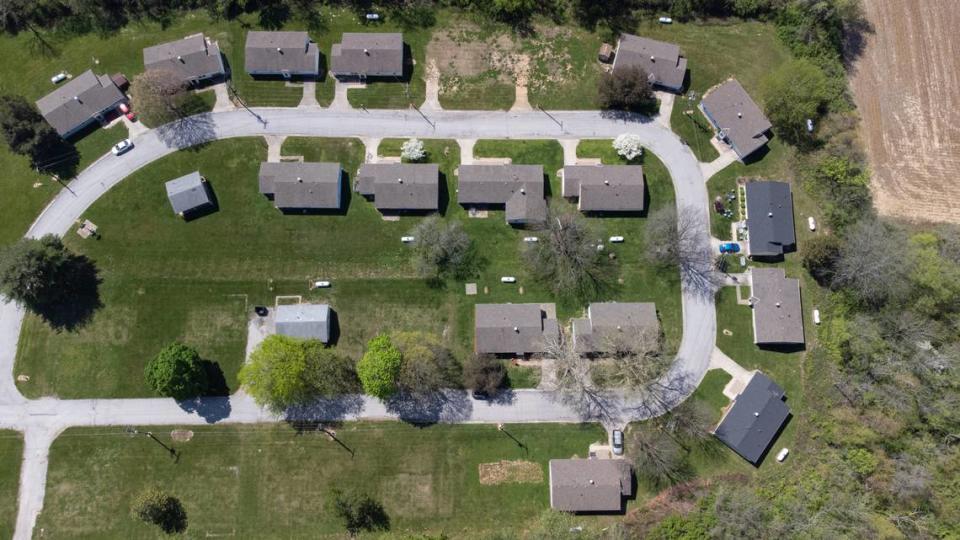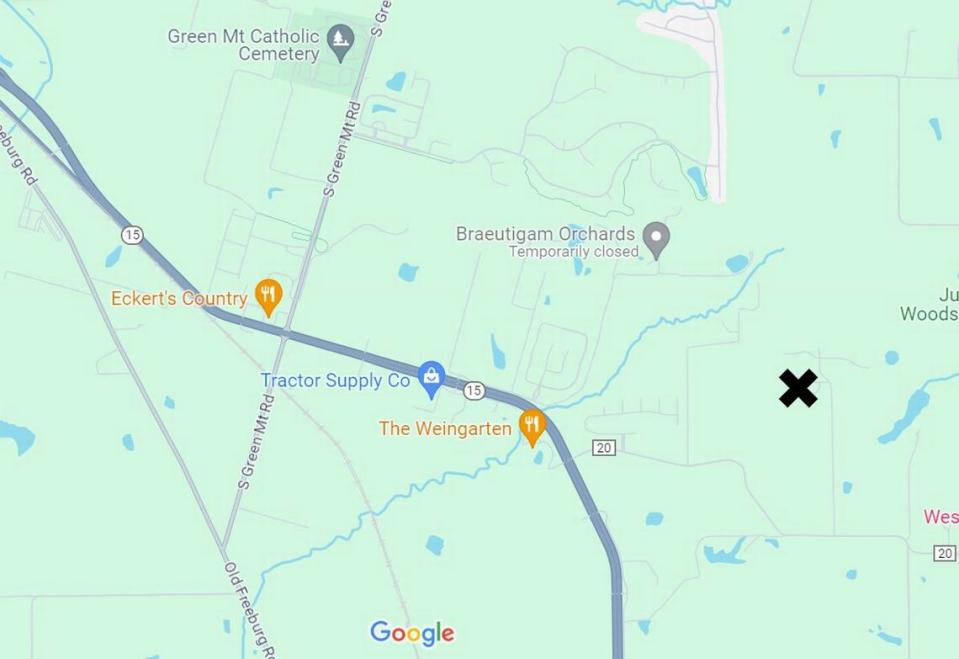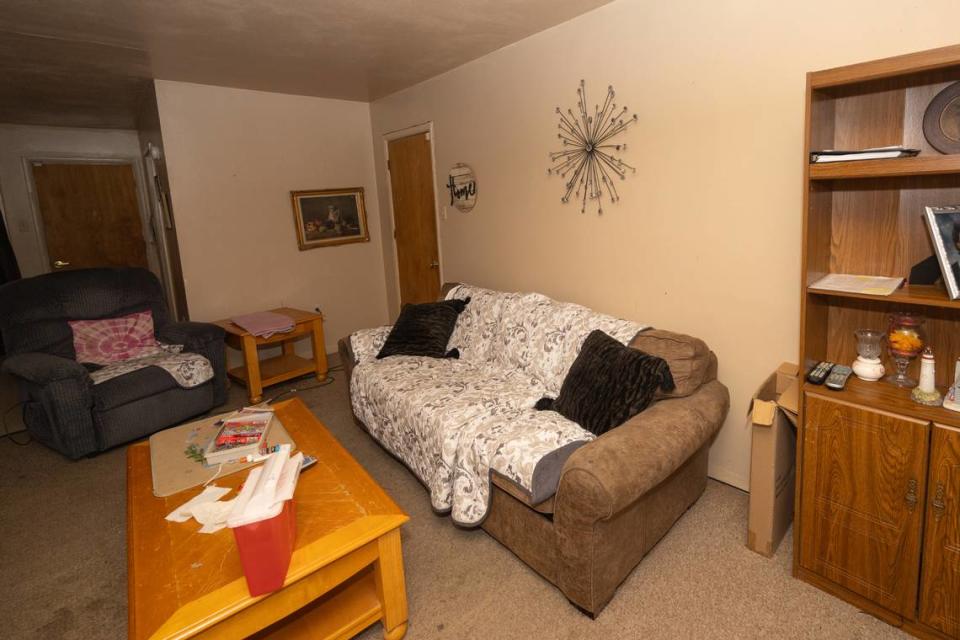SAVE closes residential area for disabled adults after 40 years in rural Belleville
St. Clair Associated Vocational Enterprises, better known as SAVE, has closed its residential area in rural Belleville after more than 40 years of housing adults with developmental disabilities.
The nonprofit organization will continue to operate its vocational day program, according to Executive Director Paul Wibbenmeyer.
The number of people living in the residential area, which resembles a small subdivision of homes, peaked at about 70 in the early 1990s. It gradually declined to 15 last year. The last two residents, a 64-year-old man and a 69-year-old woman, moved out this month.
“I am saddened to see people leave who’ve lived here for decades, but that sadness is lessened by my belief that it’s in their best interest,” said Wibbenmeyer, a staff member since 1996.
Before SAVE took over, the residential area provided housing for U.S. military personnel who operated a radar station in the 1950s and ‘60s.
SAVE’s residential program was funded through a fee-for-service agreement with the the Illinois Department of Human Services. Wibbenmeyer noted that IDHS has moved away from segregating people with disabilities in large facilities, preferring to place small groups in neighborhood homes for community integration.
For that reason, the state stopped sending people to live in SAVE’s residential area in the early 2000s, he said. Residents who moved in prior generally stayed until they died or needed advanced medical care.
Last year, the SAVE board and staff stepped up efforts to arrange for remaining residents to be placed in small group homes in Belleville and surrounding communities.
“It just didn’t make sense to continue to run (the residential program) with so few people,” Wibbenmeyer said.

Rachel Otwell, director of communications for IDHS, declined to make a state official available to answer questions about the closing of SAVE’s residential area or the evolution of department policy on housing for people with developmental disabilities.
Otwell emailed a statement about a “transformative” three-year initiative announced last year by IDHS and Illinois Gov. J.B. Pritzker aimed at “compassionate, positive and data-informed reshaping” of the state’s approach.
“The initiative includes a deeper investment in Home and Community Based supports, prioritizing the movement from institutionalized care to community care, guided by the wishes of individuals, their families, and/or their guardians,” the statement read.
SAVE owns about 54 acres off Jefferson Road, west of Illinois 15, between Belleville and Freeburg.
About a dozen buildings serve as offices, warehouses and assembly and packaging plants, where adults with developmental disabilities get vocational training and work for wages. SAVE formerly operated an electronics-recycling facility, but that closed about a decade ago.
SAVE leaders expect to announce plans later this year for what will be done with the residential area, which includes 17 ranch-style, two- and three-bedroom frame homes on a looped street.
“We’re working on some plans for the housing, but those plans haven’t been finalized,” Wibbenmeyer said.

SAVE was founded in 1972 by a handful of parents who wanted to give their children with developmental disabilities an opportunity to lead meaningful and, in some cases, independent lives.
But roots of the SAVE site go back to 1949, when the U.S. government used eminent domain to take an 85-acre tract of land, known as Turkey Hill, from a Freeburg attorney and his sister. It became part of a U.S. Air Force network of early-warning radar sites.
Belleville Air Force Station was activated on May 1, 1951, as home to the 798th Aircraft Control and Warning Squadron, later renamed 798th Radar Squadron. But its existence wasn’t publicly acknowledged until Maj. Walter Sherrell released a statement to the BND the following November.
“Our job involves the use of radar to detect the approach of enemy planes, which might attack the St. Louis area,” he wrote. “We are also charged with directing U.S. Air Force fighters to intercept any attacker in this area.”
The base eventually consisted of 94 buildings, including homes and dormitories to house military personnel, according to historians. In 1959, the U.S. Army established an air defense command post with Nike anti-aircraft missiles.
“But continuing advances in technology were making the base increasingly obsolete,” BND Answer Man Roger Schlueter wrote in a 2012 column. “By June 23, 1968, all equipment had been shipped off, all buildings were closed and secured, and the keys to the main gate were turned over to Scott Air Force Base.”
Belleville City Council voted in 1974 to acquire the land and turn it into a park with tennis and basketball courts, ball diamonds, a boat dock, golf course and even a hockey rink. However, officials changed their minds two months later after evaluating the cost.
The federal government began allowing SAVE to use the Turkey Hill property in 1975. Thirty years later, it transferred ownership to the non-profit organization, which celebrated with an open house.
“We can now do with the property whatever it is we would like to do, and that’s kind of scary and kind of exciting at the same time,” said then-executive director Randy Law.


